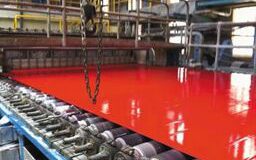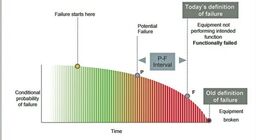How Has NA’s Tissue Business Weathered the Coronavirus Pandemic?
BRUCE JANDA
While Asia has supplanted North America as the center of global tissue growth, North America still represents the world’s most mature tissue market and maximum tissue consumption rate per capita. Its product and consumer trends are also predictive of potential trends in the developing regions.
Economic and social convention consider North America to be comprised of Canada and the United States, although geographically it also includes Mexico and a group of islands in the region. Mexico’s demographics and economic statistics are reported as part of the Latin American region. However, since Canada, Mexico, and the United States are the only countries producing tissue in this area, we consider them as a unit. The new USMCA trade agreement supports intensive cross border tissue activity between these three countries initiated by the previous NAFTA treaty. The United States represents about 2/3 of this region’s total population, with Mexico adding slightly more than 1/4 of the total.

Figure 1 represents the gross domestic product per capita of each of the three countries. Normalized by population, Canada and the United States’ economies are quite similar in generating individual purchasing power. Mexico is significantly lower in economic production per person, so it has not shown significant economic growth compared to Canada or the United States. As a result, the US consumer had relative income growth to support further tissue consumption versus the Mexican or Canadian consumer.

Unemployment rates represent a significant drag on the development of both consumer and commercial tissue consumption and new product adoption. The coronavirus pandemic has had a significant impact on unemployment in all three countries, but Mexico’s impact is significantly less than Canada and the United States, as seen in Fig. 2.
Canada and the United States’ demographics and economics put them in a position to continue leadership in tissue consumption both at-home and away from home (AfH), while Mexico continues in a strong position for tissue exports. Unfortunately, the pandemic struck quickly and hit the US especially hard, which has been an evident disruption in purchasing patterns and the portion of the commercial or AfH products in the United States.

Figure 3 looks at the pandemic from the manufacturing perspective. The states or provinces relative to the coronavirus impact are indicated by red shading and tissue machine locations as green flags. Most of the United States’ tissue production is in the most impacted areas, followed by Eastern Canada’s mills. Any short-term supply disruptions in COVID-19 surges over the last several months were driven by short-term panic and hoarding. Because tissue mills tend to be in remote locations, it would be difficult for the pandemic to affect them all at once and cause a significant supply disruption.
WHAT DOES THE FUTURE HOLD?
Predicting the tissue demand trajectory through the rest of the pandemic, when the pandemic will end, or what ongoing tissue demand will look like in a post-pandemic market is the subject of much speculation. The assumptions used in this analysis are that the infection rates could continue to get worse before vaccinated and recovered rates create significant herd immunity. This will probably not be reached in the US or Canada before the end of Q2 or Q3 in 2021.

Economists project that post-pandemic business travel and office occupancy may be impacted in the long term. Most forecasts are for recoveries of 50—75 percent of the volume associated with this form of business activity in the next two years. However, the same projections suggest that leisure travel will increase two levels higher than pre-pandemic as vacations and family visits will become more critical. This can change the proportion of consumer and commercial tissue demand and the mix of commercial products required to meet the new normal of North American AfH tissue demand.
Figure 4 shows the relative production of tissue in each of the three countries. Overall production in the region has grown. Canada’s share of the aggregate output has remained relatively stable, while the United States’ share has shrunk some and Mexico has increased overall production levels and the resulting percentage of the North American total.
Figure 5 illustrates the relative share of North American tissue exports and imports in World Trade by each country. Tissue exports from North America are more than double imports to the region. Mexico’s share of exports has grown significantly over the last 14 years, while Canada and the United States have lost share.
The coronavirus pandemic shifted demand from commercial tissue use AfH to consumer tissue as the stay-at-home orders took effect and all travel plummeted. North American commercial tissue demand represents a larger share than any other region. The United States commercial tissue demand had been running about 34 percent of total tissue. Figure 6 shows the overall North American tissue production by grade. Specialty tissue is relatively small, at 1 percent of the total, and commercial tissue capacity represents 30 percent of aggregate production.

The finished products break down the tissue grade production capacities in Fig. 7. US consumers demand the highest softness levels in the world, which requires more energy to deliver. The US consumer towel production capacity represents 87 percent of the total consumer towel. The breakdown of commercial tissue products by country is also descriptive of the United States’ tissue market. Commercial tissue capacity in the United States represents 94 percent of all commercial hand towels produced in North America. US commercial napkin represents 90 percent of total capacity and commercial bath 86 percent.
Most of the commercial bath tissue formats are designed for dispenser use in high volume venues. Giant, unperforated rolls of tissue on 3-inch cores cannot be used effectively at home while concerts, athletic events, and daily travel are curtailed. Commercial hand towel production is more of a mixed consequence as the increased focus on sanitation and handwashing tends to increase demand. If the trend toward improved hand hygiene continues, a net increase in commercial hand towel demand is possible. If we all continued to wash our hands while out of the home, this demand could increase by up to 50 percent.
Advanced tissue technology is concentrated in US tissue capacity compared to Mexico and Canada. Fisher research confirms that more than 80 percent of consumer towels and 60 percent of consumer bath tissue capacity is advanced tissue making, which provides superior absorbency and softness. It’s interesting to note that commercial hand towels are starting to have significant input from advanced technology, which results in lower grammage and more effective hand dries.

Integrated fiber supply is a significant contribution to lower-cost production. Our research reveals the relative percent of furnish purchased by product format for each of the three countries. Industrial tissue tends to use high amounts of purchased fiber, and the commercial products have traditionally used high percentages of integrated recycled furnish. The consumer bath, facial, and towel products all have large portions of purchased pulp in the US and Canada, which is driven by consumer product performance preferences. The US also has a larger than expected percentage of integrated virgin fiber in tissue products, mostly due to integrated Georgia Pacific tissue sites.
North America’s tissue business is well connected by trade and cross-border ownership. However, there are really two separate markets. The consumer or retail products reflect consumer demand for very high softness and absorbency in either branded or private label products. The commercial or AfH tissue has less focus on softness and is controlled by the facility management. In many cases, ease of service, low cost to maintain, and reduced theft or damage drive tissue performance instead of the consumer. Commercial hand towels appear to be somewhat of an exception where increased amounts of advanced technology are used to reduce sheet use and please business patrons.
It remains to be seen if the tissue supply chain in North America can continue to deliver as COVID-19 vaccinations are being implemented on a vast scale. The post pandemic recovery can be expected to be disjointed, as different parts of the economy rebound. This would suggest a return to slow and steady consumer tissue growth, but the commercial or AfH tissue business could be impacted. Increased focus on leisure and travel will drive increased consumption, while a slow return to the office coupled with reduced business travel and increased home office use will change the mix of consumer tissue products.
Bruce Janda is a TAPPI Fellow with more than 40 years of experience in the paper and non-woven industry, specializing in tissue and towel products and processes. Reach him at bjanda@fisheri.com. For more data and insight into the present and future state of the pulp and paper industry, contact Fisher International at fisheri.com.




